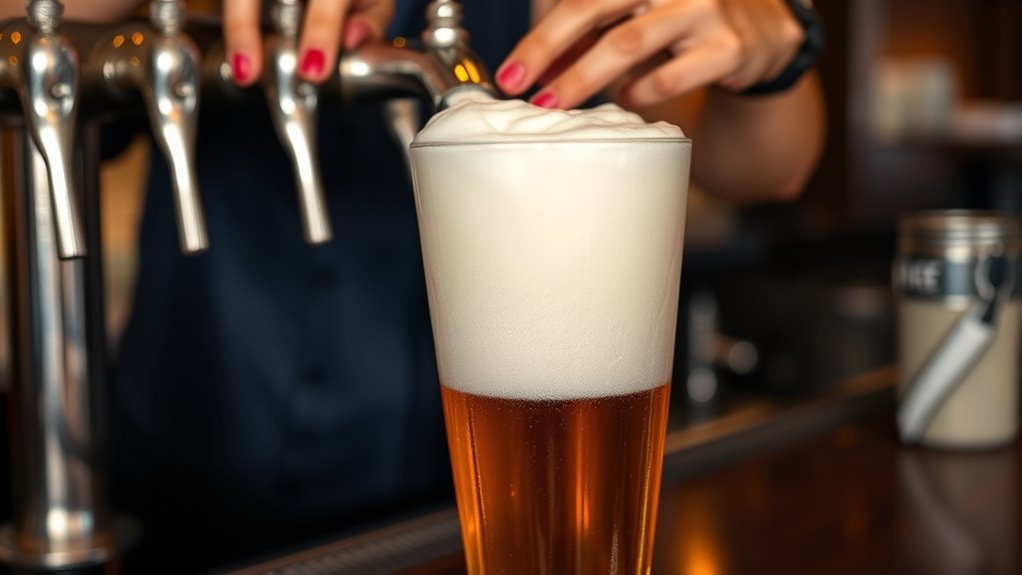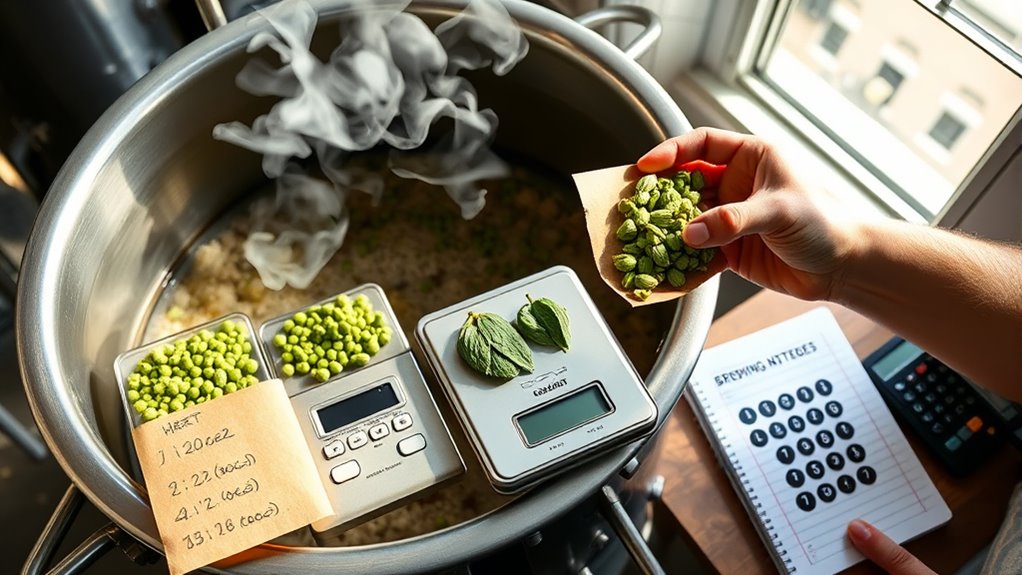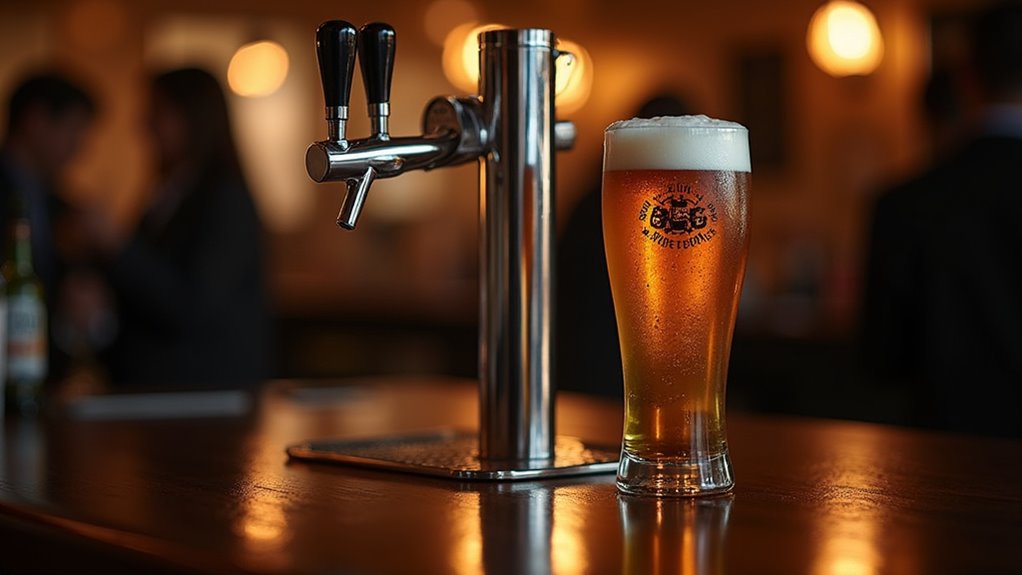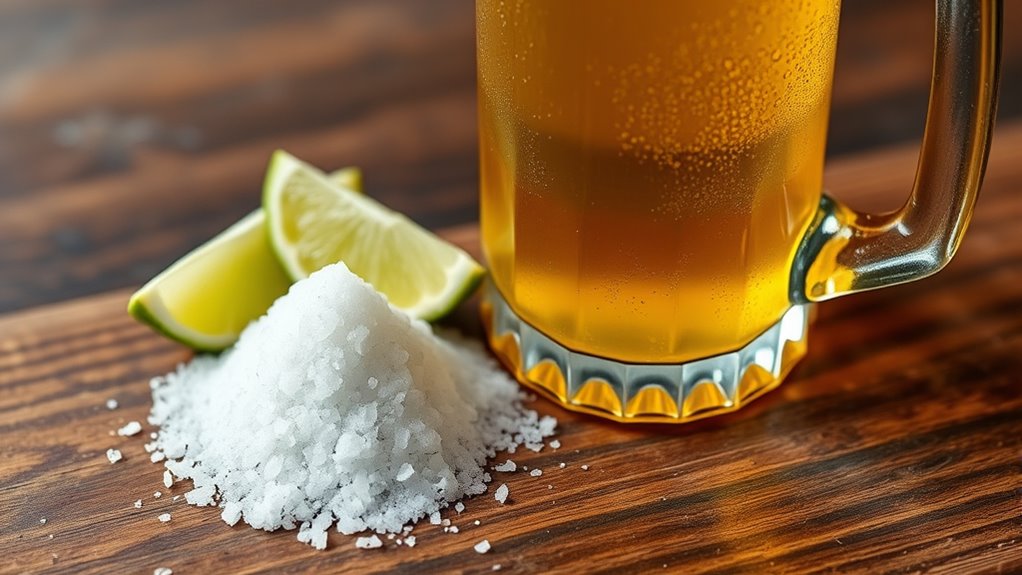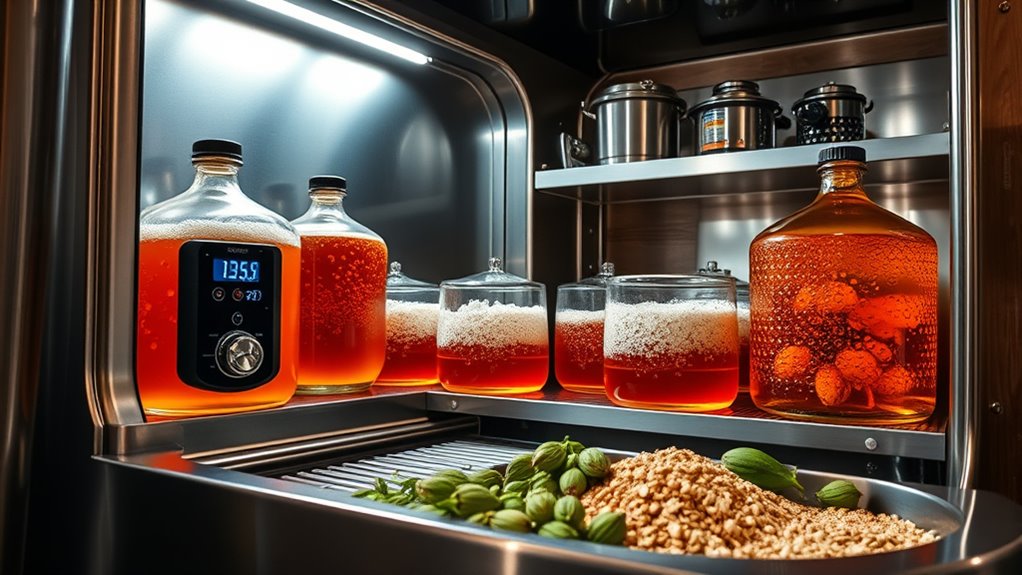To fix foamy draft beer, start by checking CO2 pressure; it should be between 10-14 psi. Next, monitor serving temperature, keeping it between 36ºF to 40ºF to prevent expansion. Clean your beer lines every 2-3 weeks to avoid residue buildup. Look for kinks in the lines and guarantee the right glassware is used—dirty glasses can create foam. If your beer is over-carbonated, release some pressure and let the keg sit before pouring. There’s more to guarantee a perfect pour.
At a Glance
- Check and maintain CO2 pressure between 10-14 psi to prevent excessive foam during pouring.
- Ensure serving temperature is between 36ºF to 40ºF to avoid CO2 expansion and foam.
- Clean draft lines and faucets every 2-3 weeks to eliminate clogs and residues that cause foaming.
- Allow kegs to rest for at least 30 minutes after transport to stabilize CO2 levels.
- Release excess pressure from the keg if over-carbonation is suspected, then recheck the pour after an hour.
Understanding the Causes of Foamy Beer
When you’re pouring draft beer and notice excessive foam, understanding the causes can help you tackle the problem effectively.
Foamy beer often results from temperature fluctuations and improper CO2 pressure settings. Ideally, maintain CO2 pressure between 10-14 psi for peak pour quality.
Other factors include dirty beer lines, temperature differences between the beer and faucet, and obstructions in the beer line. If the keg temperature is too low, it can lead to over-foaming, while warmer beer may expand CO2 excessively. Regular sanitation of your brewing equipment is crucial to prevent contamination that can also affect pour quality, particularly by eliminating bacteria and wild yeast that might disrupt the brewing process.
Regular maintenance, like cleaning draft lines every 2-3 weeks, is essential to guarantee a quality pour.
Helpful Hints:
- Check for dirty lines.
- Monitor keg temperature.
- Inspect for blockages.
Checking CO2 Pressure Levels
Checking CO2 pressure levels is essential for ensuring a smooth pour of draft beer, as incorrect settings can lead to excessive foam or flat beer.
To maintain ideal CO2 pressure, follow these tips:
To ensure optimal beer quality, regularly check CO2 pressure and allow kegs to stabilize after transport.
- Aim for a CO2 pressure between 10-14 psi for most beers.
- Regularly check the pressure gauge to avoid pouring foamy beer.
- Allow kegs to rest for at least 30 minutes after transportation to stabilize CO2 levels.
Monitoring Serving Temperature
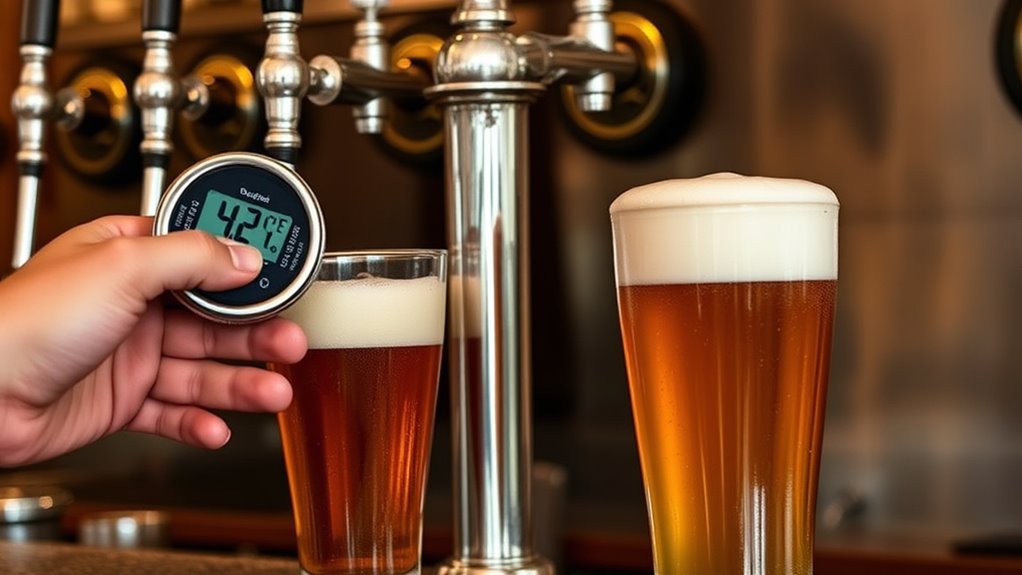
Maintaining the right serving temperature is essential for ensuring your draft beer pours smoothly and tastes its best. Aim for a consistent range of 36ºF to 40ºF to optimize beer quality and minimize foam levels.
Be mindful of temperature differentials; warm taps or glasses can cause excessive foam due to CO2 expansion. Insulating your draft lines outside the refrigeration unit prevents warming that affects clarity and foam levels.
Consider using a font fan to circulate cold air around bar top fonts, maintaining the ideal serving temperature. Consistent storage temperature is key to avoiding over-carbonation and foamy pours.
Helpful Hints:
- Regularly check your serving temperature.
- Insulate your draft lines effectively.
Inspecting Beer Line Cleanliness
Inspecting beer line cleanliness is essential for ensuring a great draft beer experience, as dirty lines can greatly impact both flavor and foam levels.
Regular inspections can prevent issues like excessive foaming and poor taste. Here are key points to remember:
- Clean draft lines and faucets every 2-3 weeks to avoid buildup.
- Check for clogs, mold, or other residues that can lead to dirty beer.
- Replace damaged beer lines annually to maintain peak performance.
Evaluating Beer Line Length and Diameter
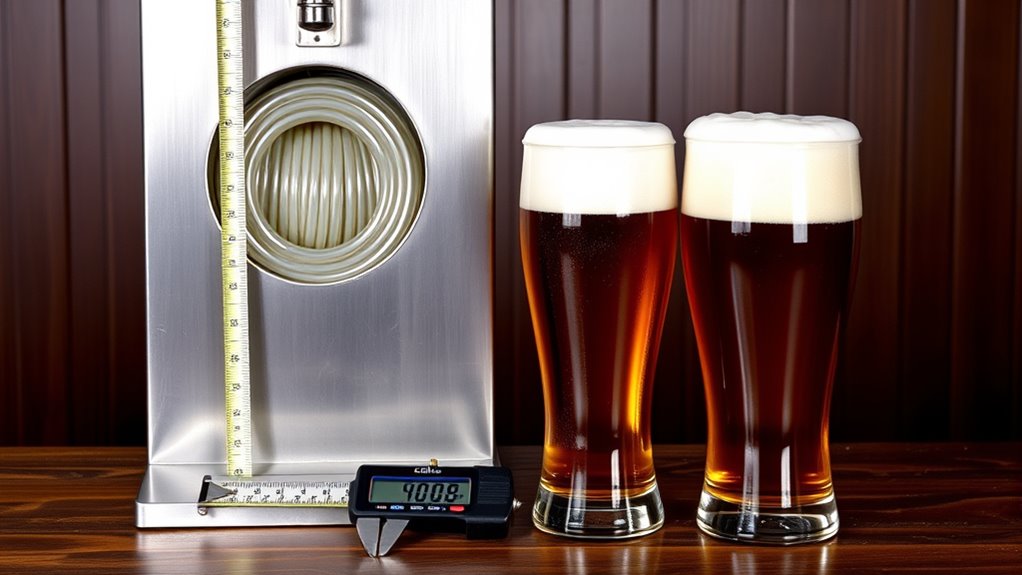
Evaluating the length and diameter of your beer lines is essential for achieving the perfect pour. The ideal internal diameter for beer lines is 3/16 inch, which optimizes flow rates and reduces foam production.
Aim for beer lines between 5 to 6 feet long; shorter lines can cause quick pours that lead to excessive foaming. For lighter beers like Coors Light, consider longer lines to maintain pour quality.
Regularly inspect your beer lines for cleanliness and functionality, as any obstruction can negatively impact your beer’s presentation. Proper adjustments in line specifications can greatly enhance your draft experience.
Identifying and Fixing Kinks or Obstructions
How can you guarantee your beer lines provide a smooth pour without excessive foam? Start by inspecting your lines for kinks or obstructions that could restrict flow.
Here are some essential checks:
- Verify your beer lines are the proper diameter (ideally 3/16 inch) and length (5-6 feet).
- Look for rough edges on fittings and connectors that may disrupt flow.
- Check for tiny bubbles, indicating air leaks from a missing probe washer.
Maintaining a well-sealed keg coupler and managing high pressure are vital for peak performance.
Regular cleaning every 2-3 weeks can also help prevent buildup and guarantee a perfect pour.
Ensuring Proper Glassware Cleaning
To achieve a smooth pour without excessive foam, the cleanliness of your glassware plays a significant role.
Start by ensuring your glasses are “beer clean,” meaning free from oils and detergent residues that can compromise foam quality. Rinse each glass with cold water before pouring; this enhances head retention and bubble formation.
Use a dedicated glass cleaning solution instead of dish soap to avoid soapy films. Air-dry your glasses to prevent lint contamination, and regularly inspect for chips or damage that can increase foaming.
Helpful Hints:
- Rinse before each use.
- Use proper cleaning solutions.
- Inspect glassware regularly.
Addressing Over-Carbonation Issues
When dealing with foamy draft beer, one major culprit often lies in over-carbonation, which occurs when the CO2 pressure exceeds the recommended range of 10-12 PSI.
This can lead to excessive foam during pouring, ruining your experience. To address over-carbonation, follow these steps:
- Release pressure from the keg.
- Allow the keg to sit for an hour.
- Check the pour again for foam.
Regular Maintenance Best Practices
Regular maintenance of your draft beer system is essential for ensuring a consistent, high-quality pour.
Start by cleaning your draft lines and faucets every 2-3 weeks to prevent buildup that causes foamy pours. Inspect beer lines monthly for clogs or damage, ensuring proper flow.
Use appropriate line diameter (3/16 inch) and length (5-6 feet) to balance pressure. Regularly monitor CO2 tank levels, maintaining pressure between 10-12 PSI to avoid over-carbonation.
Finally, replace worn-out beer lines annually to uphold hygiene and performance.
Helpful Hints:
- Set reminders for cleaning.
- Keep spare parts handy.
- Document maintenance activities.
